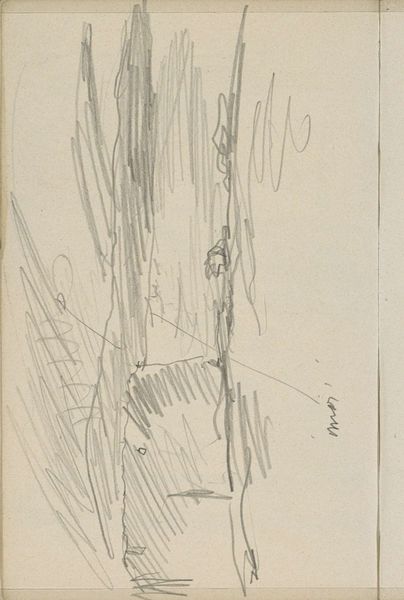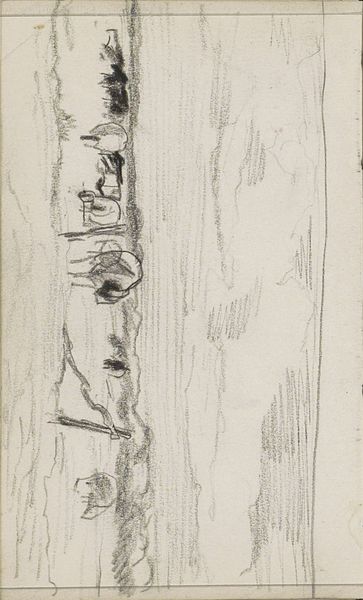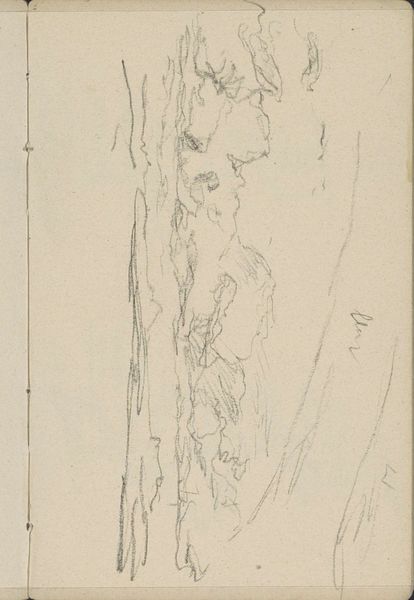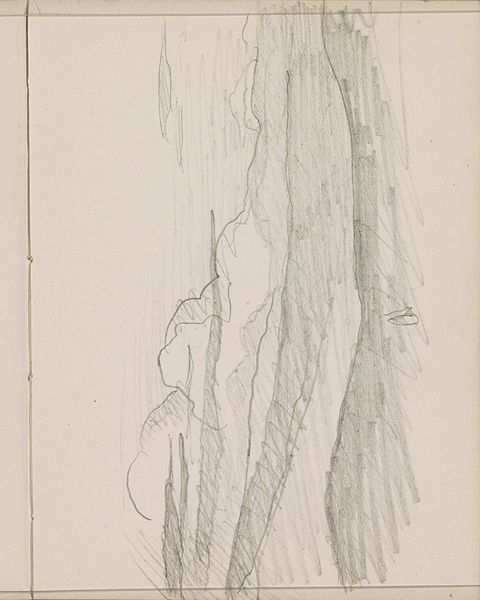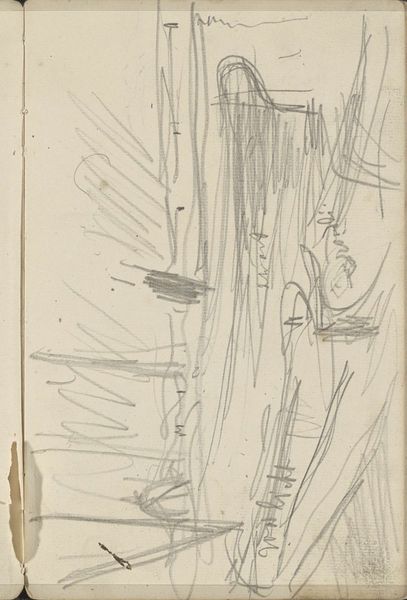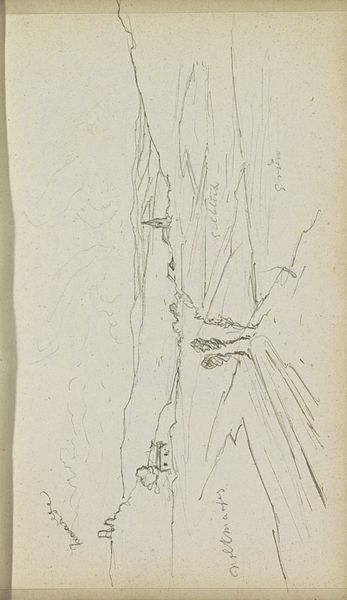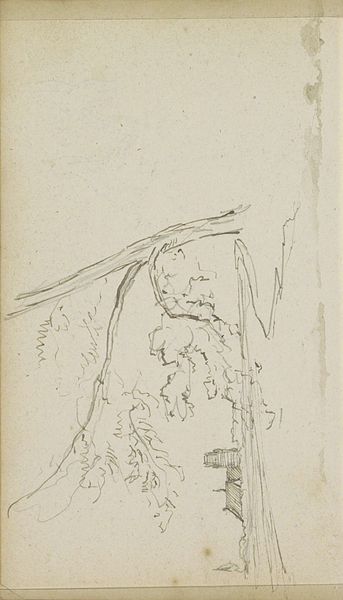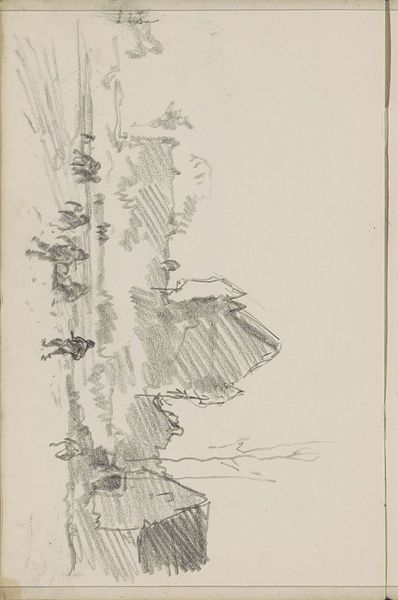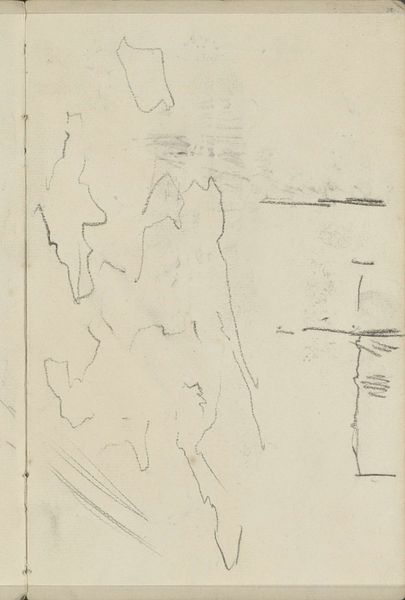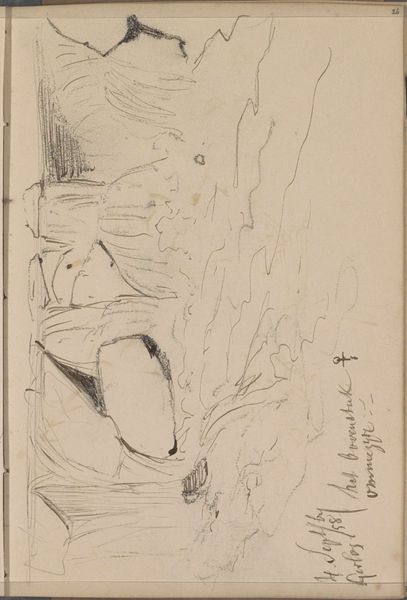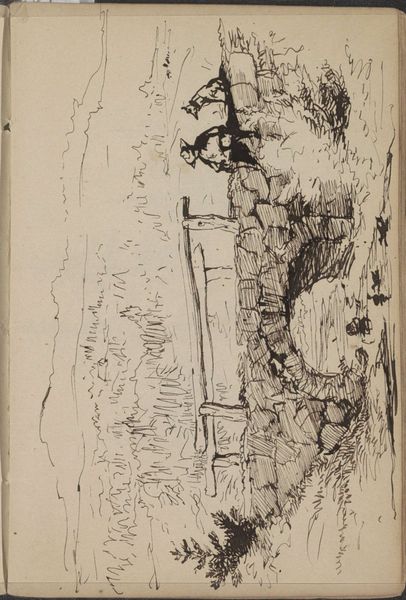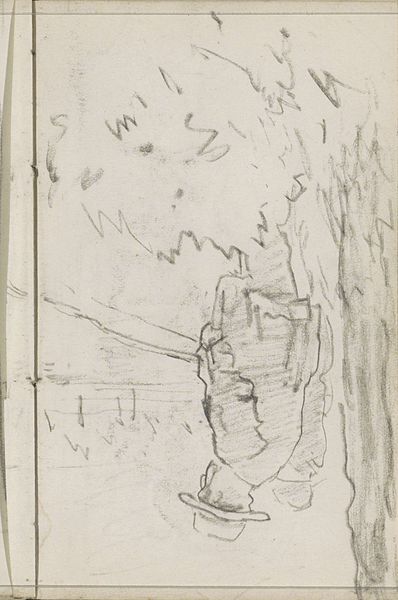
drawing, paper, pencil
#
drawing
#
pencil sketch
#
landscape
#
paper
#
pencil
#
realism
Copyright: Rijks Museum: Open Domain
Editor: So this is "Stenen brug met twee bogen over een beek", or "Stone bridge with two arches over a stream", a pencil drawing by Johannes Tavenraat, dating from after 1854. It's housed here at the Rijksmuseum. I’m immediately struck by the detail, even though it is "just" a sketch. What stands out to you? Curator: What I find compelling about this piece is its location within the tradition of Dutch landscape art and its relationship to burgeoning national identity. Sketches like these weren’t merely preparatory; they reflected a specific way of seeing and valuing the local environment. This bridge, in its simple rendering, takes on a political dimension. Editor: A political dimension? How so? Curator: Think about the Netherlands at this time. Nation-building was underway, and landscape painting, even in sketch form, became a tool for celebrating Dutch territory, defining its borders, and cultivating patriotic sentiment. Were images of this sort intended for public display, do you think? Editor: Possibly not, it does feel more like a private study, which feels at odds with a political motivation, although that doesn’t mean it didn’t shape Tavenraat’s wider body of work. Perhaps that kind of undercurrent affected other, more public commissions or gallery works. I see how landscape itself can become politicized! Curator: Exactly! The choice to depict such a seemingly mundane scene elevates the ordinary and emphasizes the unique character of the Dutch landscape. These images are about more than just what’s shown. The historical moment is crucial to the piece's resonance. Editor: Fascinating. I had initially overlooked those deeper layers. I appreciate now that a sketch of a simple stone bridge can hold significant cultural and historical meaning. Curator: Absolutely, and this makes art history endlessly interesting!
Comments
No comments
Be the first to comment and join the conversation on the ultimate creative platform.
